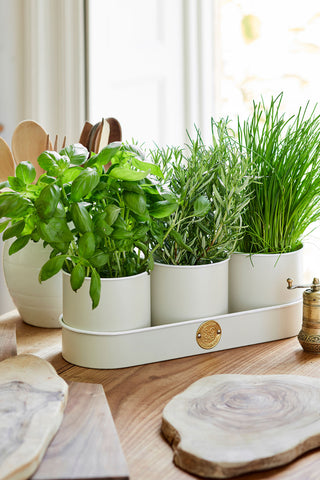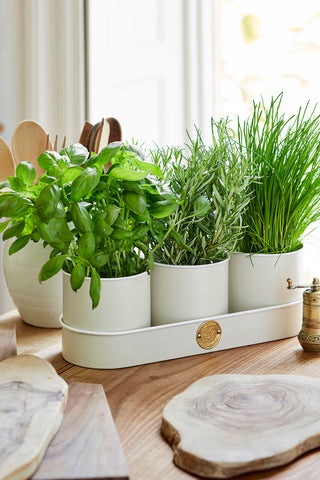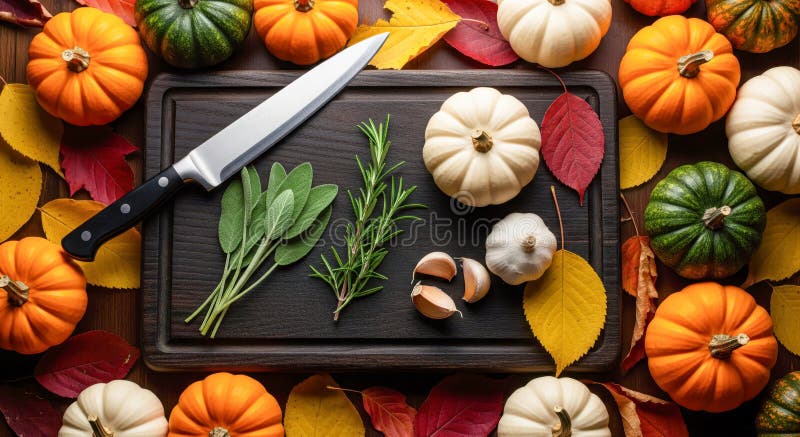
Bringing the Garden Inside: Growing Culinary Herbs Indoors Over Winter
As the days grow shorter and the first frosts kiss our gardens, it’s tempting to resign ourselves to a winter of flavorless, store-bought herbs. But what if you could extend the vibrant tastes of summer right into your kitchen? Growing culinary herbs indoors over winter is not only possible, but it's a rewarding way to brighten up your home and meals during the colder months. Imagine the joy of snipping fresh basil for a comforting tomato soup or adding fragrant rosemary to a hearty winter roast, all grown just steps from your stove.
In this blog post, we’ll guide you through everything you need to know to cultivate a thriving indoor herb garden. We’ll cover the essentials for success, from lighting and watering to soil and pest control, and provide specific instructions for growing five of the most popular and useful culinary herbs. So, let’s bring the garden inside and infuse our winter days with fresh flavors and fragrant greenery!

Essential Tips for a Successful Indoor Herb Garden
Before diving into specific herbs, let's cover some general tips that will help you create a thriving indoor garden:
Choose the Right Pots: Terracotta pots with drainage holes are ideal. They allow excess water to escape, preventing root rot.
Maintain Consistent Temperatures: Aim for a temperature range of 65-75°F (18-24°C). Avoid placing your herbs near drafty windows or heating vents.
Increase Humidity: Indoor air can be very dry in winter. Grouping plants together helps create a more humid microclimate. You can also use a humidifier or place your pots on trays filled with pebbles and water (making sure the pots aren’t sitting in the water).
Rotate Regularly: Turn your herb pots regularly to ensure even light exposure on all sides. This will prevent them from becoming leggy and growing towards the light source.
Harvest Frequently: Regular harvesting encourages the plants to produce more leaves. Don't be afraid to snip off sprigs and leaves – it's good for the plant!
Growing Your Favorite Culinary Herbs Indoors
Now, let's explore the specific needs of five popular herbs you can easily grow indoors: Basil, Mint, Chives, Parsley, and Rosemary.
1. Basil
Basil is a beloved herb that adds a burst of fresh, summery flavor to countless dishes. Here's how to keep it happy indoors:
- Light: Basil needs a lot of light. A full-spectrum LED grow light is essential, providing at least 12 hours of light per day. Position the light 6-8 inches above the plant. If you have a very sunny south-facing window, you might be able to get away without a grow light, but supplemental light is almost always necessary in winter.
- Watering: Water when the top inch of soil feels dry. Be careful not to overwater, as basil is prone to root rot.
- Soil: Use a well-draining potting mix amended with perlite for optimal drainage.
- Fertilizer: Feed with a diluted liquid seaweed fertilizer (half strength) every two weeks.
- Pest Control: Keep an eye out for aphids. Treat with neem oil spray as needed, following product instructions carefully.

2. Mint
Mint is incredibly versatile, perfect for teas, cocktails, and adding a refreshing touch to both sweet and savory dishes. It's also relatively easy to grow indoors:
- Light: Mint thrives in bright, indirect sunlight or under a full-spectrum LED grow light for 10-12 hours per day.
- Watering: Keep the soil consistently moist but not waterlogged.
- Soil: Use a well-draining potting mix. Mint spreads rapidly, so consider planting it in its own container to prevent it from taking over your entire herb garden.
- Fertilizer: Feed with a diluted liquid seaweed fertilizer (quarter strength) once a month. Mint is not a heavy feeder.
- Pest Control: Monitor for spider mites, especially in dry conditions. Increase humidity by misting regularly and treat with insecticidal soap if necessary.
3. Chives
Chives offer a mild onion flavor that enhances a wide range of dishes, from salads to soups to baked potatoes. They're also very easy to grow indoors:
- Light: Chives need at least 6 hours of direct sunlight or 12 hours under a full-spectrum LED grow light.
- Watering: Water when the top inch of soil feels dry.
- Soil: Use a well-draining potting mix.
- Fertilizer: Feed with a balanced liquid fertilizer (10-10-10) diluted to half strength every three weeks.
- Pest Control: Chives are generally pest-resistant, but monitor for aphids. Wash them off with a strong stream of water or use insecticidal soap.

4. Parsley
Parsley is a versatile herb used as both a garnish and a flavorful ingredient in many cuisines. It can be a bit slower to germinate than other herbs, so patience is key!
- Light: Parsley requires bright, indirect sunlight or 12-14 hours under a full-spectrum LED grow light.
- Watering: Keep the soil consistently moist.
- Soil: Use a well-draining potting mix rich in organic matter.
- Fertilizer: Feed with a diluted liquid seaweed fertilizer (half strength) every two weeks.
- Pest Control: Monitor for whiteflies. Use yellow sticky traps to catch adults and treat with insecticidal soap if necessary.
5. Rosemary
Rosemary brings a distinctive, woodsy aroma and flavor to roasted meats, vegetables, and breads. It can be a bit more challenging to grow indoors than other herbs, but with the right care, it can thrive.
- Light: Rosemary needs at least 6-8 hours of direct sunlight or 14 hours under a full-spectrum LED grow light.
- Watering: Allow the soil to dry out slightly between waterings. Rosemary is susceptible to root rot if overwatered.
- Soil: Use a well-draining, slightly sandy potting mix. Terracotta pots with drainage holes are ideal.
- Fertilizer: Feed with a diluted liquid fertilizer formulated for herbs (follow product instructions) every month during the growing season.
- Pest Control: Monitor for spider mites, especially in dry conditions. Increase humidity and treat with neem oil spray if necessary.

Troubleshooting Common Indoor Herb Garden Problems
Even with the best care, you might encounter some challenges. Here are a few common problems and their solutions:
- Yellowing Leaves: This can be caused by overwatering, underwatering, or nutrient deficiencies. Adjust your watering schedule and fertilize regularly.
- Leggy Growth: This is usually a sign of insufficient light. Move your herbs to a sunnier location or supplement with a grow light.
- Pests: Regularly inspect your plants for pests. Treat infestations promptly with appropriate organic pest control methods.
Bringing the Garden to Your Table
Growing herbs indoors is not just about having fresh ingredients on hand; it's also about bringing a little bit of nature into your home during the cold, dark months. The vibrant green leaves and fragrant aromas can uplift your spirits and add a touch of beauty to your kitchen. Embrace the joy of harvesting your own herbs and experimenting with new recipes. Add fresh basil to your homemade pizza, sprinkle chives on your scrambled eggs, or infuse your olive oil with rosemary for a delightful dipping sauce.
So, are you ready to embark on your indoor herb gardening adventure? Don't let the winter blues get you down – bring the garden inside and enjoy the taste of fresh herbs all season long. We'd love to hear about your experiences! Share your tips, tricks, and favorite herb-infused recipes in the comments below. Happy gardening!